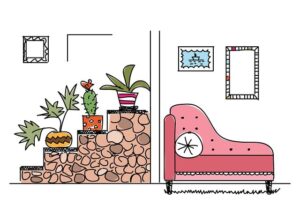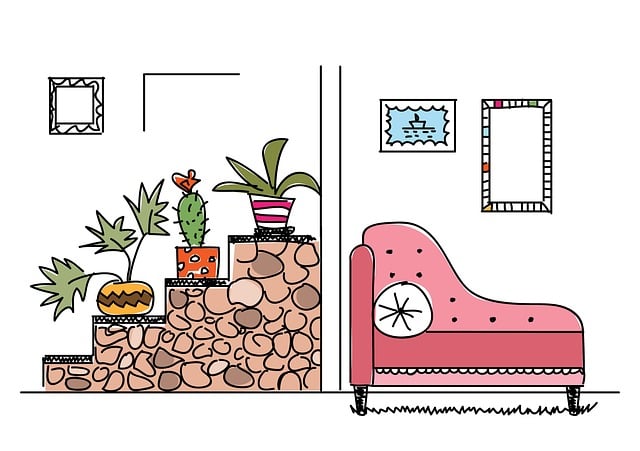Are you ready to dive into DIY home improvement? Whether you’re a beginner or an experienced DIYer, this guide will help you transform your living space. From simple upgrades to advanced projects, we’ll cover everything you need to know.
Table of Contents
- Getting Started with DIY Home Improvement
- Essential Tools for DIY Success
- DIY Furniture Projects
- Smart Storage Solutions
- Outdoor Living Spaces
- Quick Weekend Upgrades
- Safety First: DIY Best Practices
- FAQs
Getting Started with DIY Home Improvement.
DIY home improvement can save money and give you a sense of accomplishment. Before starting any project, follow these steps:
- Assess your skill level honestly
- Start with smaller projects
- Research thoroughly before beginning
- Create a realistic budget
- Gather all necessary materials
Expert Tip: “Proper planning is key to successful DIY home improvement. I always tell my clients to add 20% to their budget and timeline for unexpected issues.” – Sarah Chen, Interior Designer with 15 years of experience.
Essential Tools for DIY Success.
Every DIY home improvement enthusiast needs a basic toolkit. Here’s what you should have:
- Cordless drill
- Hammer
- Measuring tape
- Level
- Screwdrivers (Phillips and flathead)
- Utility knife
- Safety gear (goggles, gloves, dust mask)
Pro Tip: “Invest in quality tools – they last longer and make your DIY home improvement projects easier and safer.” – Mike Thompson, Master Carpenter.
DIY Furniture Projects.
 Creating custom furniture is a rewarding DIY home improvement project. Start with these beginner-friendly ideas:
Creating custom furniture is a rewarding DIY home improvement project. Start with these beginner-friendly ideas:
- Basic Platform Bed
Materials needed:
- Wood planks
- Screws
- Wood glue
- Sandpaper
Steps:
- Cut wood to size
- Sand all pieces
- Assemble frame
- Add support slats
- Attach headboard (optional)
- Floating Shelves
Materials needed:
- Wood boards
- Brackets
- Wall anchors
- Level
Steps:
- Locate wall studs
- Mark bracket positions
- Install brackets
- Attach shelves
- Check levelness
Expert Insight: “Pre-drill your holes to prevent wood splitting when building DIY furniture. It’s a small step that makes a big difference.” – Lisa Woodward, DIY Workshop Instructor.
Read Also: DIY Bed Frames
Smart Storage Solutions.
Maximize your space with these DIY home improvement storage projects:
- Under-Stairs Storage
Transform wasted space into valuable storage. Create:
- Pull-out drawers
- Shelving units
- Hidden cupboards
- Custom Closet Organization
Steps:
- Remove existing hardware
- Plan your layout
- Install new rods and shelves
- Add specialty organizers
- Optimize vertical space
Pro Tip: “In small spaces, think vertically. The walls are your friends in DIY home improvement storage solutions.” – Alex Rivera, Professional Organizer.
Outdoor Living Spaces.
Extend your living area with these DIY home improvement projects:
-
DIY Deck
Timeline: 2-3 weekends Difficulty: Intermediate
Basic steps:
- Plan and get permits
- Prepare the ground
- Install footings
- Build the frame
- Add decking boards
- Install railings
-
Patio Cover
Materials:
- Pressure-treated lumber
- Concrete
- Screws and brackets
- Roofing material
Expert Advice: “For outdoor DIY home improvement projects, always use weather-resistant materials and check local building codes before starting.” – David Wright, Landscape Architect
Quick Weekend Upgrades. 
Boost your home’s value with these fast DIY home improvement projects:
- Update cabinet hardware.
- Paint an accent wall
- Install a new bathroom vanity
- Update light fixtures
- Add crown molding.
Time-Saving Tip: “Prep work is 80% of any DIY home improvement project. Good preparation makes the work much faster.” – Emma Lewis, Home Renovation Blogger.
Safety First: DIY Best Practices
Follow these safety guidelines for all DIY home improvement projects:
- Always wear appropriate safety gear
- Read all tool manuals
- Know your limitations
- Keep a first aid kit handy
- Don’t rush your work
Safety Expert Insight: “The most common DIY home improvement injuries happen when people try to rush or skip safety steps. Take your time and stay safe.” – Dr. Robert Martinez, Emergency Medicine Physician.
Conclusion
DIY home improvement is accessible to everyone with the right guidance and patience. Start small, build your skills, and tackle bigger projects as you gain confidence. Remember, the joy of DIY comes not just from the finished project but from the journey of creating something with your own hands.
Frequently Asked Questions.
Q: How much money can I save with DIY home improvement?
A: Typically 50-80% compared to hiring professionals, depending on the project.
Q: What’s the best first DIY project for beginners?
A: Start with simple projects like painting or installing new cabinet hardware.
Q: Do I need permits for DIY home improvement?
A: It depends on your location and project scope. Always check local regulations.
Q: How long does it take to get good at DIY?
A: Most people feel comfortable with basic projects after 3-4 successful completions.
Q: What DIY home improvement projects add the most value?
A: Kitchen updates, bathroom renovations, and storage solutions typically offer the best return.


